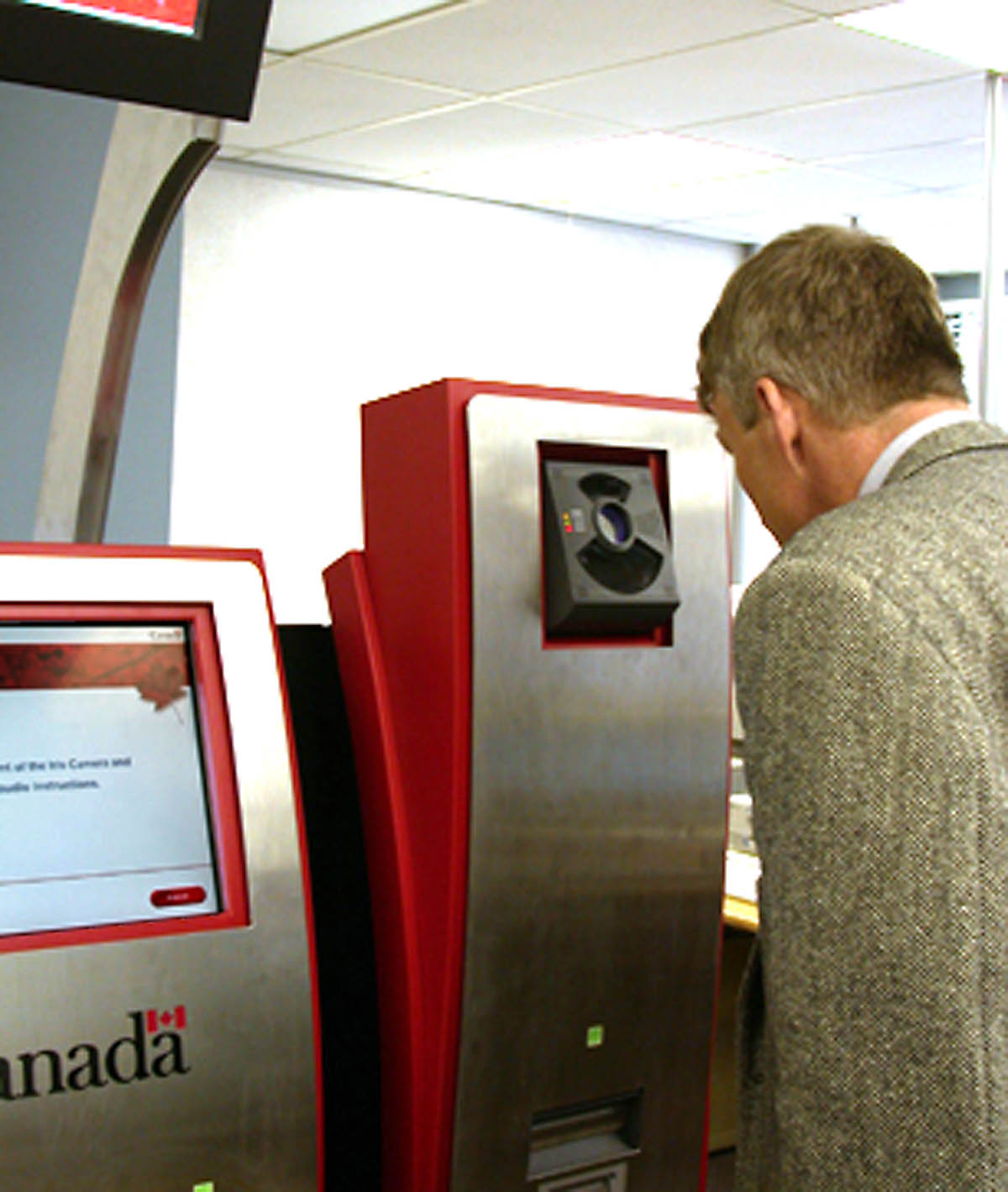Iris recognition
Iris recognition is a nonabrasive biometric technology developed for identity authentication. By taking a high-resolution picture of an individual’s eye, an iris recognition system provides the highly accurate identification of the individual in real-time [1]. Iris recognition is a particularly effective method of identification due to the iris being a well-protected organ, which displays a unique, complex texture that remains mostly unchanged throughout a person’s life [1].
The pictures of a person’s iris are represented mathematically [1]. This unique data identifies the individual and is stored as a template, which can be placed into a searchable database or compared to other database entries. The comparison algorithms used by iris recognition systems stem from the algorithms developed by Dr. John Daugman at Cambridge University [1]. Daugman’s algorithms have never had any instances of false-acceptances, where two different irises are falsely identified as the same iris [1].
The most common uses of iris recognition have been:
- as a passport substitute at airports
- to prohibit unauthorized persons from entering restricted areas at airports
- to control database and computer access
- to pair a mother to her infant in hospital maternity wards
- to screen for wanted suspects or criminals at border crossings [1]
|

CANPASS Air Iris Recognition System
Photograph retrieved on March 17, 2007 from http://www.biometricwatch.com
|
Operation Theory
Because the iris is often obscured by a person’s eyelids and eyelashes, multiple algorithms are required to identify and exclude these parts to give an accurate template of the iris [5]. After differential operators are used to locate the boundaries of the iris, only the pixels representing the iris are recorded as a bit pattern [5]. A Gabor wavelet transform is then used to create a template from the iris’ image [5]. All amplitude information is discarded to minimize the effects of lighting variations [5]. The full procedure of processing, analyzing and encoding the image requires only 1 second [3]. After the template is created, a database of templates may be searched to find a match for the iris in question.
Security Advantages and Concerns
- An internal organ such as the iris is well protected and is not susceptible to wear as fingerprints are.
- Surgical procedures do not change the texture of the iris, which is used as the distinguishing factor by iris recognition systems [4].
- Iris textures are completely unique. Even identical twins have different iris textures [2].
However, many commercial iris recognition systems cannot distinguish between high quality photographs of a person’s face and their real face [4]. To solve this problem, a human may supervise the use of an iris recognition system. Another solution is to track the movement of the eye in order to verify that the iris is live. On the contrary, it is still much easier to fool a fingerprint authentication or face recognition system than it is to fool an iris recognition system [4].
Applications
Iris recognition systems are currently being used at Canadian international airports located in Edmonton, Winnipeg, Calgary, Halifax, Montreal, Toronto and Vancouver as the CANPASS Air program [6]. This program facilitates efficient international travel for its members.
One of the largest applications of iris recognition is used for border control by the United Arab Emirates [8]. Every day, 12 billion iris comparisons are completed in real-time searches through a database of wanted individuals at 35 of their air, land and sea ports [8]. Iris recognition is also used for immigration into the United Kingdom and into the Netherlands [7].
References
1. Daugman, J. (1993) "High confidence visual recognition of persons by a test of statistical independence." IEEE Transactions on Pattern Analysis and Machine Intelligence, vol. 15(11), pp. 1148-1161.
2. Noble, I. (2001, August 9). The eyes have it. BBC News Online. Retrieved March 24, 2007 from http://news.bbc.co.uk/2/hi/science/nature/1477655.stm
3. Dr. John Daugman’s Webpage, Cambridge University. (2007). Advantages and Disadvantages of the Iris for Identification. Retrieved March 24, 2007, from http://www.cl.cam.ac.uk/~jgd1000/addisadvans.html
4. Harowitz, S. (2007, February 13). Faking Fingerprints and Eying Solutions. Security Management Magazine. Retrieved March 24, 2007, from http://www.securitymanagement.com/library/001971.html
5. Daugman, J. (2004) "How iris recognition works." IEEE Trans. CSVT, vol. 14, no. 1, pp. 21 - 30.
6. Canada Border Services Agency. (2007). Welcome to CANPASS. Retrieved March 24, 2007, from http://www.cbsa-asfc.gc.ca/travel/canpass/
7. Immigration and Nationality Directorate. (2007). Welcome to IRIS. Retrieved March 24, 2007, from http://www.iris.gov.uk/
8. Dr. John Daugman’s Webpage, Cambridge University. (2007). The United Arab Emirates Deployment of Iris Recognition. Retrieved March 24, 2007, from http://www.cl.cam.ac.uk/~jgd1000/deployments.html
See Also
External Links
Main Developer: Helen Lee
This page was last modified 21:43, 4 April 2007.
